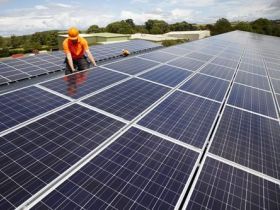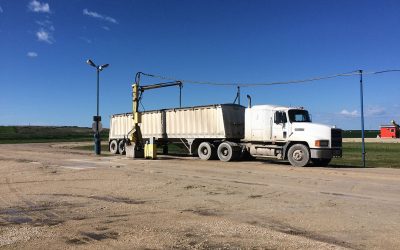Solar system for Jameson feed mill

A British animal feed manufacturer has made a substantial investment in one of North of England’s largest solar panel roof systems.
WE Jameson & Son has unveiled a 540-panel system, measuring 700 sq metres, at its mill in Masham, North Yorkshire, UK, in a bid to cut energy costs.
"Our feed mill has an enormous requirement for power, so reducing our reliance on carbon-based energy is a priority for us. Having a huge area of redundant roof space seemed to be a wasted asset and once the Government brought in the FiT scheme, fitting a PV system to the roof was the logical conclusion," said partner Graham Jameson.
Government support
Solar photovoltaic (PV) installations harness energy from the sun to produce electricity. Their popularity has grown following the introduction of the UK Government’s ’Feed in Tariff’ (FiT) scheme.
It entitles owners of domestic and commercial PV systems to claim money back for every kilowatt hour (kWh) of electricity generated.
Feed-in tariffs are ’generation tariffs,’ offered for the production of electricity, with additional savings on energy bills from using the power.
If the equipment owner is unable to use the electricity, it is exported to the National Grid, for which an additional ’export tariff’ payment is received. The revenue is inflation-linked and government-guaranteed for 25 years.
The WE Jameson installation used 540 solar panels, to create a system specification of 99.9kWh. Producers with systems over 50kWh used to be able to claim 32.9 pence for every free kWh of electricity produced, but since 1 August the payment has been reduced to 19 pence for any project commissioned after that date.
Indirect sunlight
Mark Duncan, whose firm Duncan Solar oversaw the installation, said it was one of the largest solar power roofs in the North of England. “Some people are misguided into thinking that solar panels cannot perform in the North of England.
Mark Duncan, whose firm Duncan Solar oversaw the installation, said it was one of the largest solar power roofs in the North of England. “Some people are misguided into thinking that solar panels cannot perform in the North of England.
“However, in the North we do make sure we use panels that perform best in indirect sunlight.”
Jamesons are now planning an open day at the feed mill to give the public an opportunity to view the installation.











